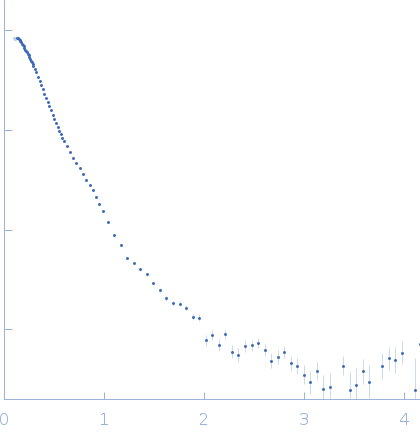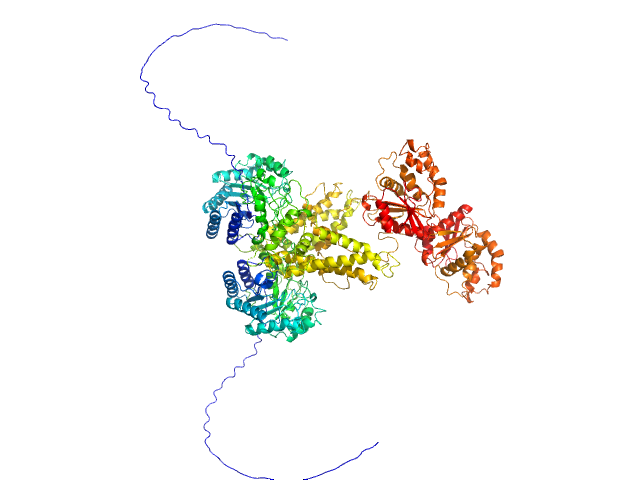| MWexperimental | 278 | kDa |
| MWexpected | 163 | kDa |
| VPorod | 443 | nm3 |
|
log I(s)
5.27×10-1
5.27×10-2
5.27×10-3
5.27×10-4
|
 s, nm-1
s, nm-1
|
|
|
|

|
|
SAXS
data from solutions of
Multi-domain human O-GlcNAcase
in
25 mM Tris buffer, 150 mM NaCl, and 0.5 mM TCEP, pH 7.5
were collected
on the
Bruker Nanostar w Excillum source instrument (Department of Chemistry, iNANO building, Aarhus Uinversity, Aarhus C, Denmark)
using a VÅNTEC-2000 detector
at a sample-detector distance of 0.9 m and
at a wavelength of λ = 1.34 nm
(I(s) vs s, where s = 4πsinθ/λ, and 2θ is the scattering angle).
One solute concentration of 2.50 mg/ml was measured
at 20°C.
One
1800 second frame was collected.
The data were normalized to the intensity of the transmitted beam and radially averaged; the scattering of the solvent-blank was subtracted.
|
|
|||||||||||||||||||||||||||